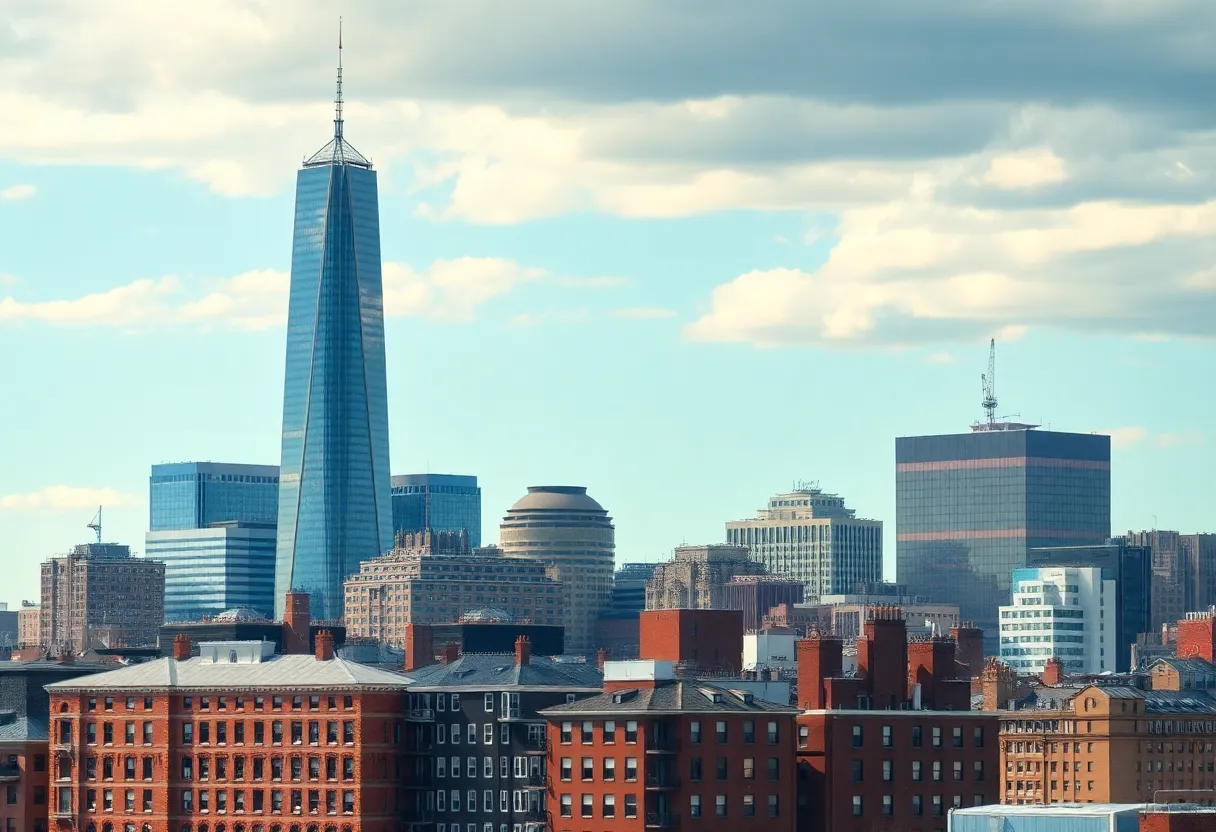News Summary
Boston residents are rallying against a proposed downtown zoning plan that could allow skyscrapers up to 700 feet tall. Critics assert that this change, labeled as ‘Manhattanization,’ threatens the city’s historic integrity and landscape. The Downtown Boston Neighborhood Association has voiced concerns over inadequate communication from the Wu administration regarding the plan. Residents fear the impact of tall buildings on weather, shadows over landmarks, and the focus on luxury housing rather than affordability. The upcoming planning board vote will be crucial for the city’s future skyline and preservation of its heritage.
Boston residents are expressing significant concern over a newly proposed downtown zoning plan that could permit the construction of skyscrapers reaching heights of up to 700 feet. Critics argue that this plan will lead to the “Manhattanization” of Boston’s historic downtown area, potentially altering its unique character and the city’s iconic landscape. The backlash from community members has intensified as the Downtown Boston Neighborhood Association asserted that the Wu administration has “blindsided” them with the final draft of the plan, which was not communicated effectively prior to its release.
The revised zoning draft reveals an increased height allowance for skyscrapers in specific downtown locations, escalating from the previously discussed 500 feet to 700 feet. This significant change has triggered public outrage, particularly among those who value the city’s historical integrity. Residents are worried that the proposed tall structures will cause adverse weather impacts and cast shadows over notable landmarks, which may include areas like the Boston Common and the Public Garden—both of which are protected under Massachusetts’s shadow law.
The city currently has only three buildings exceeding 700 feet: the John Hancock Tower at 790 feet, the Prudential Tower at 750 feet, and One Dalton at 742 feet, all situated in the Back Bay. The proposed zoning plan, by enabling more skyscrapers in the downtown area, could fundamentally change the city’s skyline and potentially lead to a rise in high-end residential units, raising questions about housing affordability and community impact.
The plan proposes the division of downtown into two zoning districts: “SKY” and “SKY-LOW-D.” In the SKY district, specifically the Financial District, building heights could reach the upper limit of 700 feet, subject to regulations regarding airspace and shadows. Meanwhile, the “SKY-LOW-D” zoning will restrict heights adjacent to the Boston Common to between 100 and 155 feet, in an attempt to balance growth with the preservation of historical sites.
Community organizations have voiced strong opposition to the plan, primarily citing the lack of adequate community engagement in the planning process. Many residents reported feeling marginalized, asserting that there were no prior communications from city officials regarding the final plan. This dissatisfaction has been compounded by a perception that the plan fails to effectively tackle issues related to affordable housing, leading to a concern that the development will focus on luxury living rather than meeting the needs of all residents.
The final public meeting regarding the zoning plan was held recently, with a planning board vote anticipated next month. City planners, including the Chief of Planning, defended the proposed heights, insisting that the plan aims to foster a vibrant downtown while accommodating community suggestions. Despite these reassurances, the proposal has drawn criticism for potentially overshadowing historic buildings like the Old State House and the Old South Meeting House, which could be adversely affected by the wind and shadow created by new skyscrapers.
Additionally, the previous draft of the zoning changes, which merely suggested 500-foot towers along Washington Street, had already sparked considerable public outcry, indicating that community sentiments were strongly against increasing building heights. Advocates for the preservation of Boston’s character emphasize the need to respect the city’s colonial history, fearing that the new plan does not genuinely address the aspirations for maintaining a community-focused growth approach.
As deliberations continue, Boston residents remain watchful and engaged, aware that the future skyline of their city—and indeed, its heritage—hangs in the balance. The outcome of the upcoming planning board vote will be crucial in determining how Boston balances the need for development with its commitment to preserving the historic essence that defines the city.
Deeper Dive: News & Info About This Topic
HERE Resources
Bulfinch Cos. Proposes Mixed-Use Development in Needham
Milton Moves Towards Compliance with MBTA Communities Act
Massachusetts Court Rules in Favor of MBTA Communities Act
Mayor Wu Proposes Zoning Changes to Revitalize Boston
Four Massachusetts Cities Among Best Places to Live in U.S.
Significant Real Estate Development Approved in Abington
Massachusetts Faces Urgent Affordable Housing Crisis
Mike Kennealy Launches 2026 Gubernatorial Campaign in Massachusetts
Chick-fil-A Expands Its Locations in Worcester
Massachusetts Housing Crisis: Efforts for Change
Additional Resources
- Boston Herald
- Google Search: Boston zoning changes
- MassLive
- Encyclopedia Britannica: Boston skyline
- Boston Globe
- Google News: Boston skyscraper news
- Banker & Tradesman
- Google Scholar: Boston community engagement
- Boston Globe Opinion
- Wikipedia: Skyscraper

Author: STAFF HERE BOSTON WRITER
The BOSTON STAFF WRITER represents the experienced team at HEREBoston.com, your go-to source for actionable local news and information in Boston, Suffolk County, and beyond. Specializing in "news you can use," we cover essential topics like product reviews for personal and business needs, local business directories, politics, real estate trends, neighborhood insights, and state news affecting the area—with deep expertise drawn from years of dedicated reporting and strong community input, including local press releases and business updates. We deliver top reporting on high-value events such as Boston Marathon, Head of the Charles Regatta, and Boston Harborfest. Our coverage extends to key organizations like the Greater Boston Chamber of Commerce and Associated Industries of Massachusetts, plus leading businesses in finance, biotech, and insurance that power the local economy such as Fidelity Investments, Biogen, and Liberty Mutual Insurance. As part of the broader HERE network, we provide comprehensive, credible insights into Massachusetts's dynamic landscape.





